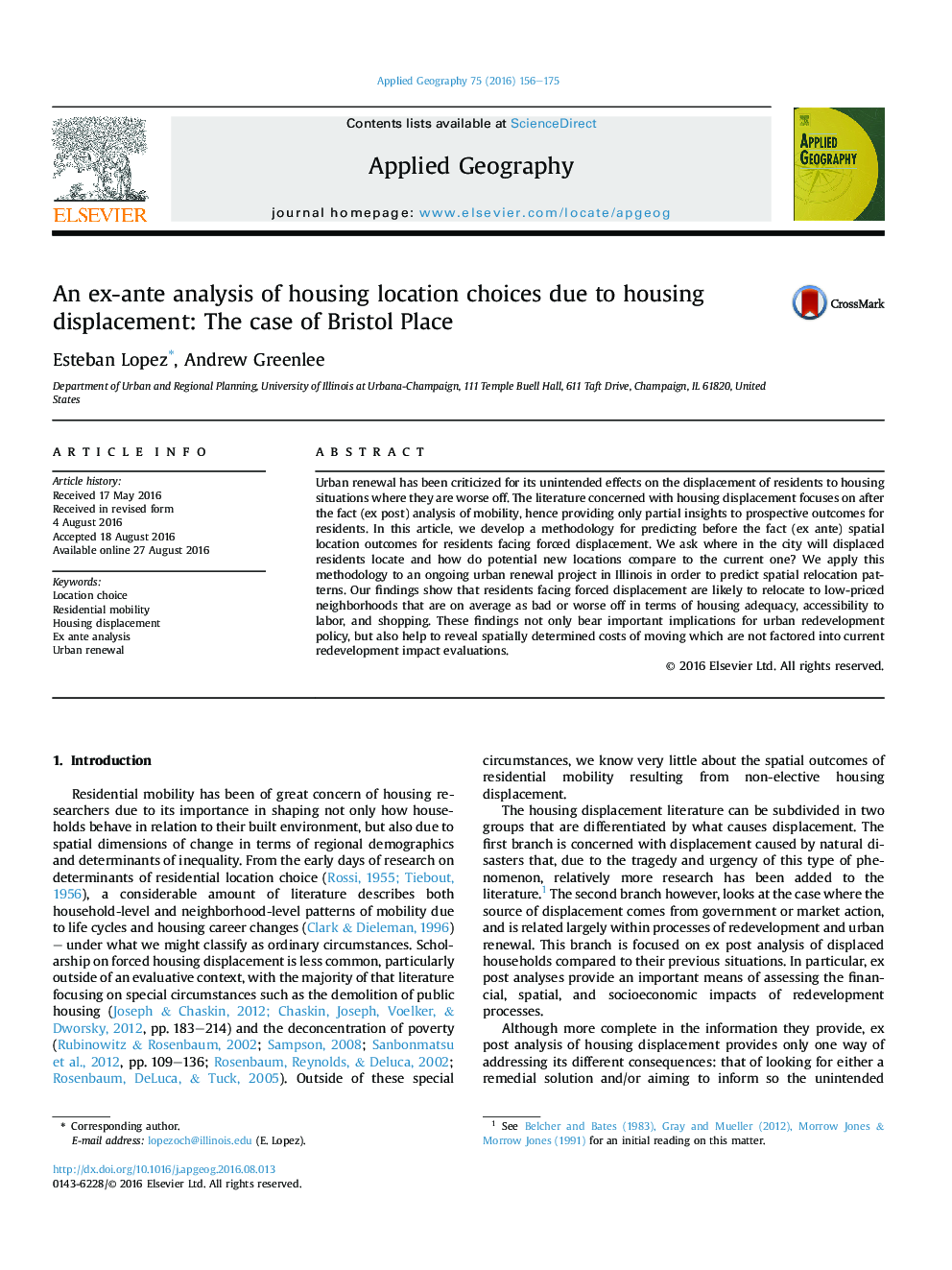| Article ID | Journal | Published Year | Pages | File Type |
|---|---|---|---|---|
| 6458476 | Applied Geography | 2016 | 20 Pages |
â¢Potential residential relocation outcomes due to a neighborhood redevelopment process are predicted at the household level.â¢A discrete choice modeling approach is used to model residential mobility for the local population.â¢Model results are used to estimate likely housing unit choices for households displaced by an urban renewal project.â¢Results forecast reductions of racial segregation, but also higher housing costs and lower accessibility to amenities.
Urban renewal has been criticized for its unintended effects on the displacement of residents to housing situations where they are worse off. The literature concerned with housing displacement focuses on after the fact (ex post) analysis of mobility, hence providing only partial insights to prospective outcomes for residents. In this article, we develop a methodology for predicting before the fact (ex ante) spatial location outcomes for residents facing forced displacement. We ask where in the city will displaced residents locate and how do potential new locations compare to the current one? We apply this methodology to an ongoing urban renewal project in Illinois in order to predict spatial relocation patterns. Our findings show that residents facing forced displacement are likely to relocate to low-priced neighborhoods that are on average as bad or worse off in terms of housing adequacy, accessibility to labor, and shopping. These findings not only bear important implications for urban redevelopment policy, but also help to reveal spatially determined costs of moving which are not factored into current redevelopment impact evaluations.
